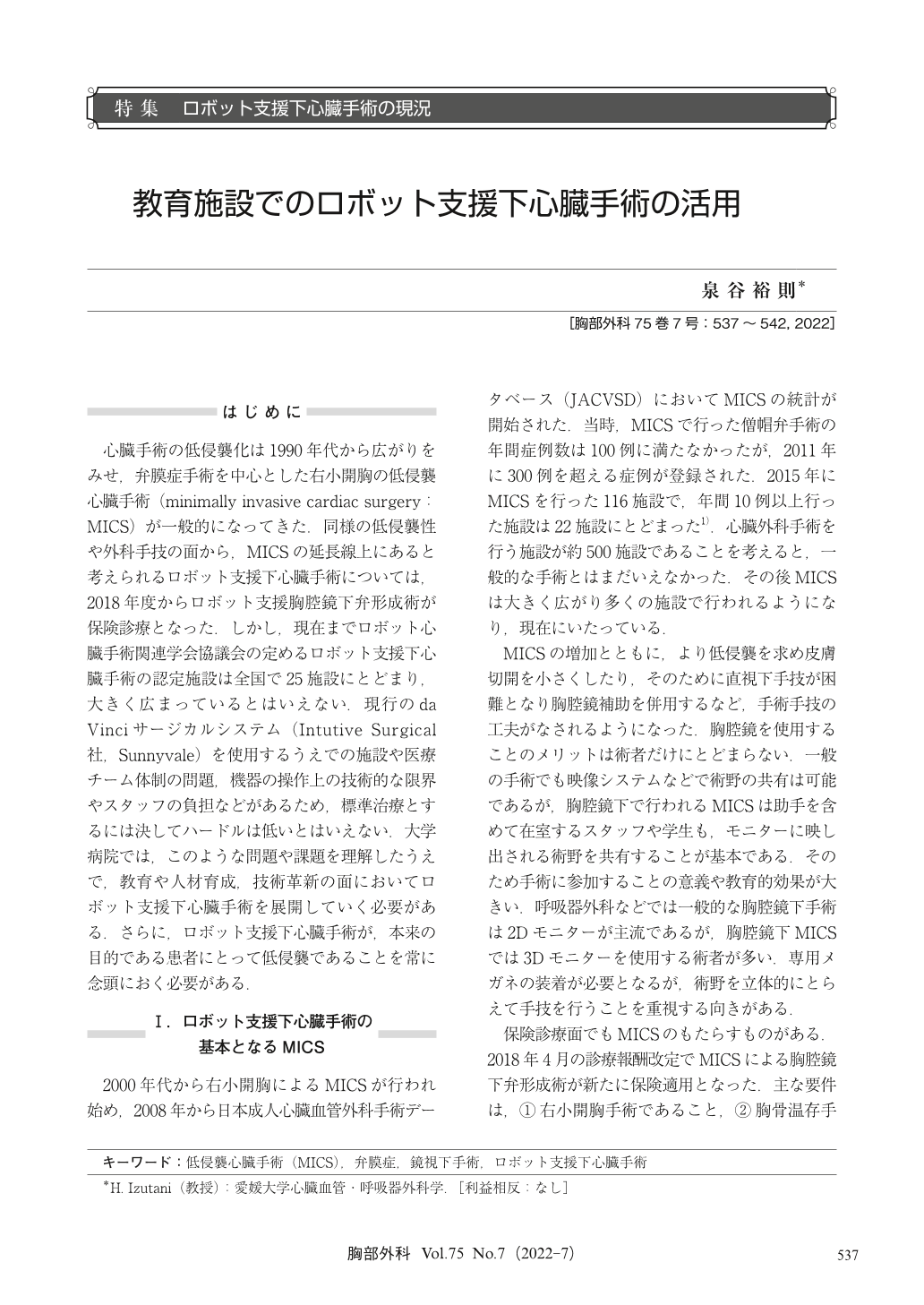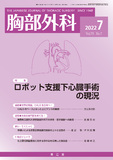Japanese
English
- 有料閲覧
- Abstract 文献概要
- 1ページ目 Look Inside
- 参考文献 Reference
心臓手術の低侵襲化は1990年代から広がりをみせ,弁膜症手術を中心とした右小開胸の低侵襲心臓手術(minimally invasive cardiac surgery:MICS)が一般的になってきた.同様の低侵襲性や外科手技の面から,MICSの延長線上にあると考えられるロボット支援下心臓手術については,2018年度からロボット支援胸腔鏡下弁形成術が保険診療となった.しかし,現在までロボット心臓手術関連学会協議会の定めるロボット支援下心臓手術の認定施設は全国で25施設にとどまり,大きく広まっているとはいえない.現行のda Vinciサージカルシステム(Intutive Surgical社,Sunnyvale)を使用するうえでの施設や医療チーム体制の問題,機器の操作上の技術的な限界やスタッフの負担などがあるため,標準治療とするには決してハードルは低いとはいえない.大学病院では,このような問題や課題を理解したうえで,教育や人材育成,技術革新の面においてロボット支援下心臓手術を展開していく必要がある.さらに,ロボット支援下心臓手術が,本来の目的である患者にとって低侵襲であることを常に念頭におく必要がある.
Minimally invasive cardiac surgery (MICS) has emerged in 1990s. Nowadays, MICS via mini thoracotomy became popular for valvular heart disease. Robot-assisted cardiac surgery was introduced with extension to MICS. Robot-assisted cardiac surgery for valvular heart disease has been covered by health insurance since 2018. So far, the number of authorized facilities for robot-assisted cardiac surgery is only 25. Currently available da Vinci surgical system is a burden to not only the surgical team but also the facility. There are a lot of problems to overcome for applying robot-assisted cardiac surgery as a standardized procedure. An educational institution like a university hospital needs to expand systematic human resource development and technological innovation for continuing and developing the robot-assisted cardiac surgery. The most important thing for the surgeon is to keep in mind for true minimally invasive surgery for the patients not for minimally incisional surgery for the cosmetic reason.

© Nankodo Co., Ltd., 2022


